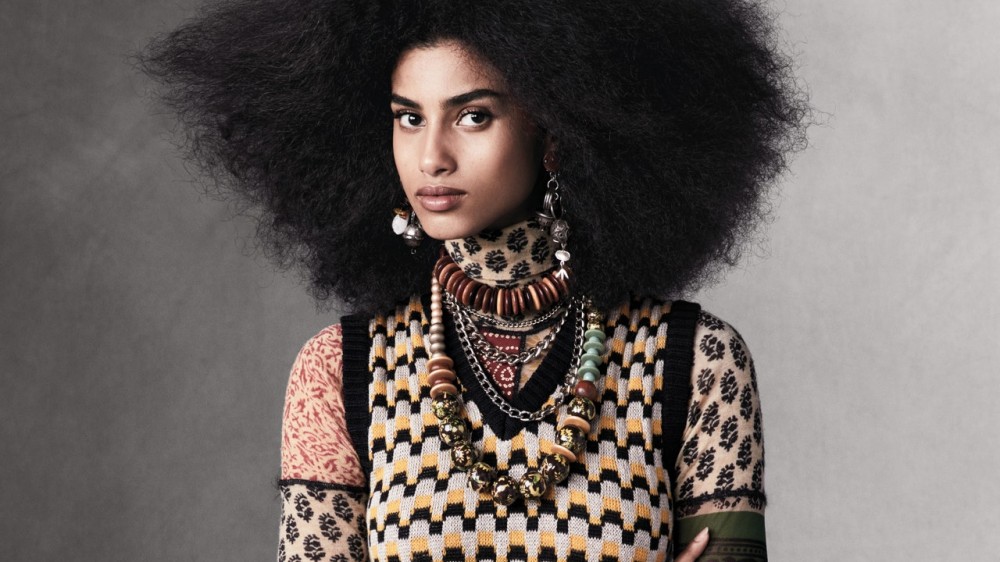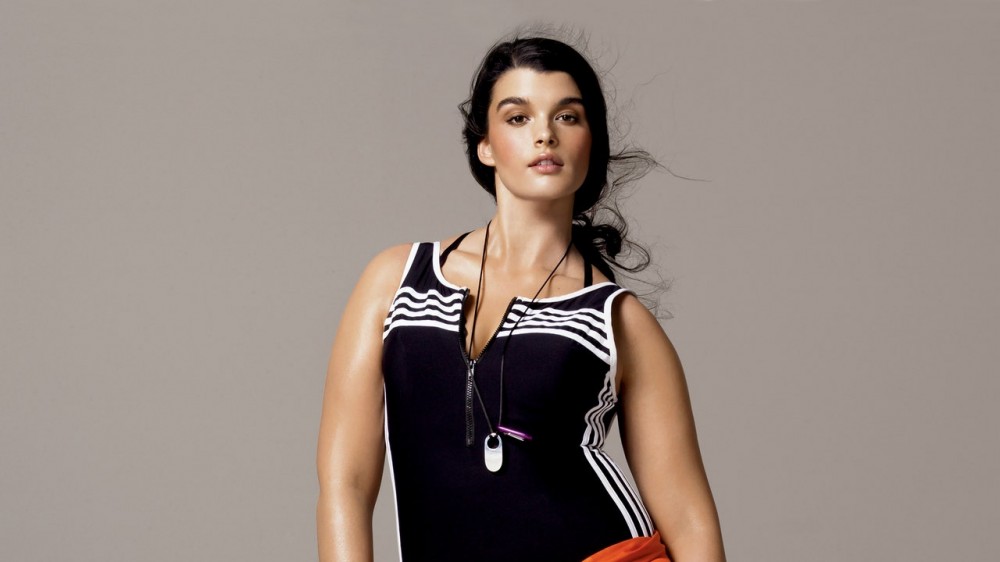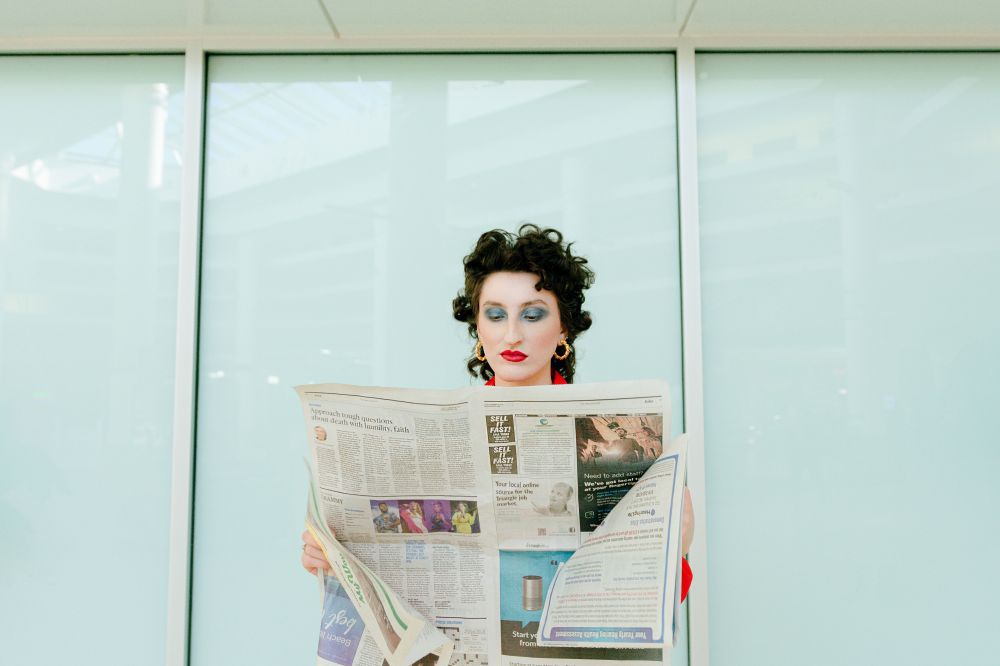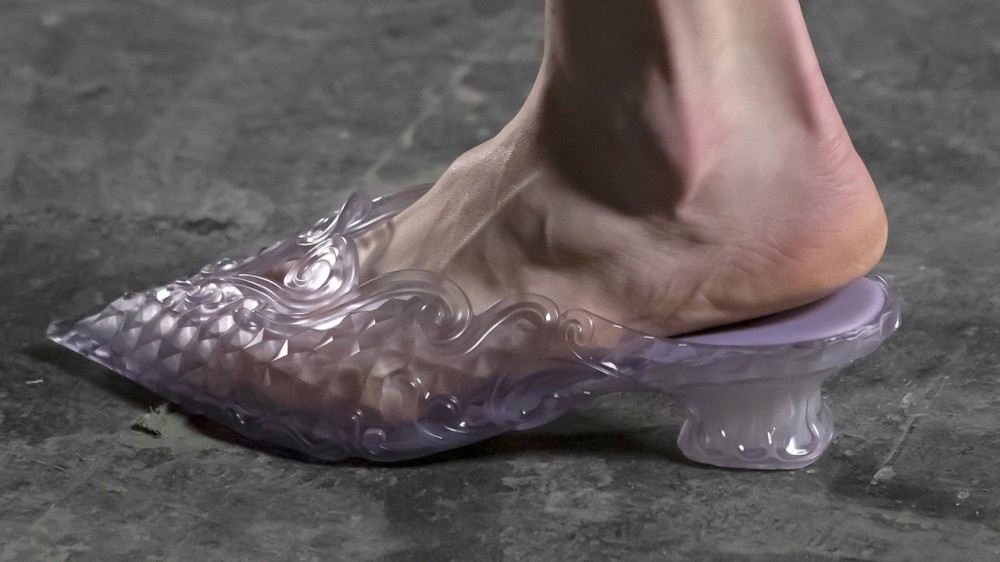
2020 Was a Big Year for Old Clothes: How Vintage, Secondhand, and Upcycling Took Off
This hasn’t been a great year for clothes—not new clothes, at least. Fashion spending plummeted a record 79% in April, early on in the pandemic. Those of us who were fortunate enough to work remotely had little reason to shop for new clothes, let alone buy anything discretionary in such uncertain times. Loungewear was the only exception; demand for sweats is still growing.
But it wasn’t just that we didn’t “need” new clothes this year. A perfect storm of crises has caused fashion to lose some of its luster. In response to that spending dip, brands attempted to offset their losses by canceling orders from their factories, triggering a garment worker crisis in the Global South. Four million Bangladeshi workers were out of a job and on the verge of starvation. By June, fashion was forced to recognize its systemic racism in the wake of George Floyd’s murder. And through everything, the climate crisis reached a tipping point; its PR efforts notwithstanding, the industry has made little progress in curbing its environmental impact.
You’d forgive the thoughtful consumer for wanting to take a break from it all. Spending is on the rise again, but people simply aren’t shopping the way they used to; the industry isn’t expected to fully recover for several years. Boston Consulting Group estimates 2020 will end with $640 billion in lost sales. The question remains: When people are excited to shop again, where will they go? Will they take a renewed interest in sustainable brands, having witnessed the pitfalls and excesses of the traditional system? Or will they prefer clothing that already exists, and turn to secondhand, thrift, and vintage?
Lyst’s annual Year in Fashion report, a data-heavy distillation of the most popular brands, products, people, and movements of the past 12 months, confirmed a rising interest in used clothes. In September, when many of us were thinking about our fall wardrobes, “vintage fashion” generated more than 35,000 new searches on Lyst, while entries for secondhand-related keywords increased 104%. Brides planning socially-distanced weddings were even looking for “vintage,” “secondhand,” or “pre-owned” wedding dresses, with searches spiking 38%. (Lyst suggests many were inspired by the vintage Norman Hartnell dress Princess Beatrice wore to her July wedding; searches for “vintage wedding dress” were up 297% in the 48 hours following her walk down the aisle.)
Maybe those citizens are thinking deeply about their carbon footprint for the first time, or they were inspired by the efforts of their favorite brands. During the spring 2021 collections, more designers than not said they’d used leftover fabrics from past collections, and in some cases (like Marine Serre), they spliced up vintage garments to create new ones. Coach’s spring 2021 collection was styled with items from seasons past to make a statement about longevity, and there were handbags upcycled from archival ’70s purses and recycled plastic. In October, Levi’s unveiled a new website, Levi’s Secondhand, to sell exclusively vintage and secondhand jeans, most of which were purchased from customers or sourced in vintage shops. Gucci launched a major collaboration with The RealReal the same week, something we wouldn’t have thought possible just a few years ago, when luxury houses mostly avoided the resale conversation. By Far and Vestiaire Collective just collaborated on a capsule of handbags made from damaged product and leather scraps, featuring floral patchwork motifs you won’t find in the main line. (By Far is also introducing a repairs scheme so customers can have their bags repaired or refurbished and ultimately keep them longer.) And next month, Miu Miu will debut a collection of 80 upcycled holiday pieces in its 57th Street Store, each made from vintage items from the ’30s to the ’70s. Perhaps we’ll see some of Miu Miu’s upcycling experiments in Display Copy, a new magazine that features only secondhand and vintage fashion.
These brands have surely clocked the rising interest in upcycled and secondhand goods, particularly among younger shoppers. Circular fashion—i.e., clothing that re-enters the market or is upcycled into something new, rather than being thrown away—is undeniably the future. ThredUp predicts the resale market will hit $64 billion by 2024, and that the online secondhand market will grow 69% by 2021. Farfetch saw such a positive response to its pre-owned handbag platform Second Life in the U.K. that it launched its U.S. expansion on Wednesday. “The reason we’re launching this new service is to follow the request of our customers,” explains Giorgio Belloli, Farfetch’s chief commercial and sustainability officer. “A lot of them have been buying or selling pre-owned goods in the past few years, so we decided to introduce this service. We’re seeing that circularity is providing [customer] retention on our site, but it’s also helping with customer acquisition. A lot of the customers in the U.K. who use this service are actually new to Farfetch.”
Through Second Life, you can “sell” a gently-used handbag directly to Farfetch in return for site credits, which are determined by the value of your bag. (You get the credits instantaneously, not when the bag sells.) Interestingly, Belloli says many of the customers who sell on Second Life are using their credits to buy new items, not secondhand ones. If that sounds a bit contradictory, Belloli sees it this way: “I think promoting pre-owned, authenticated [items] is actually giving more value to the new products brands are introducing.” Finding vintage Dior bags on Second Life might inspire a user to buy a new Dior bag, for instance, because she knows it will retain its value and she can sell it back in five or 10 years. “I think it’s an opportunity for brands to take more ownership and see the value in things they’ve already produced and sold. The more they can manage the secondary market, the more valuable their new items become.”
Surely we’ll see luxury brands create their own version of Second Life in the future, taking back items from their customers in exchange for cash or credit, then reselling them as vintage treasures. The current model is linear in many ways: A brand sells you an item, and it instantly becomes your responsibility, not the brand’s. And that’s bad for the environment—many people still throw old clothing in the trash, even if it’s in fine condition, and most of it will not decompose in a landfill. But it’s also a missed revenue stream.
It’s fair to assume most luxury customers aren’t throwing away $3,000 handbags in the trash. The concept is a no-brainer for high-end goods that retain their value, but it could work for contemporary and fast-fashion labels, too, if the clothing is high-quality enough. A polyester blouse isn’t the most viable secondhand score; it likely wouldn’t make it through multiple “lives.” The brands that invest in beautiful, durable materials and construction are best-equipped to join the circular movement.
But the movement isn’t just about “being sustainable” or doing less harm; there are plenty of other reasons to buy pre-owned goods. For one, there have never been more brands, more e-commerce sites, or more clothes in the world than there are right now, and a lot of it looks roughly the same. We’re no longer bound by geography, either; if you live in Kentucky and want a dress from Italy, China, or Australia, you can get it in a matter of days. That means if you want a dress that’s actually unique—one that you won’t see “coming and going” on the street—then vintage, thrift, and upcycled are your best options.
In a difficult year that’s seen staggering unemployment and countless shuttered businesses, the shift toward vintage and secondhand could come down to a desire for less-conspicuous fashion. It doesn’t exactly feel appropriate to wear a flashy logo or head-to-toe runway look right now, whereas the 20-year-old coat you fell in love with at a vintage shop has the added benefit of making a quieter statement.
If those vintage treasures weren’t as accessible to the masses in the past—most high-quality vintage was in major cities like New York and Paris—that’s all changed thanks to the internet and Instagram. Online vintage shopping is getting even easier with Gem, a new search engine for vintage and secondhand fashion. Liisa Joniken, a lifelong vintage shopper who grew up in Helsinki, dreamed up the site when she moved to the United States six years ago and discovered “tens and tens” of vintage and secondhand websites, from The RealReal to much smaller purveyors. “I was first delighted and excited, then exhausted and overwhelmed!” she says. “It was impossible to visit every online store and marketplace when I wanted to find a certain type of item. I thought there must be a better way to search and shop vintage—a search engine that brings all online vintage into one app. It saves so much time. Some of my friends found visiting thrift stores too time-consuming and random, but with Gem, they have fallen in love with secondhand again, as they are able to find the items they are looking for much faster, and any time of the day.”
Gem has indexed 30 million items across the internet and functions like any other search engine. The same way you might type “knee-high boots” into Google or Lyst, you can search for an item on Gem and find hundreds of vintage and used options; an entry for “pleated skirt” quickly led me to this ’80s checked skirt from Etsy seller Dameet Demoiselle and this Prada one from The RealReal. Gem only works if you know precisely what you’re looking for, meaning you won’t stumble across a mohair sweater you never knew you needed if you’re searching for leather jackets. But what’s game-changing is that Gem could replace your idle Google searches, so you can find vintage or secondhand alternatives to items you’d normally buy new. Maybe you saw an influencer wearing a lilac cardigan, and instead of searching Google for the hundreds of brand-new cardigans out there, you can find one that’s even better on Gem—and just as quickly.
“We believe vintage and secondhand is not just a trend, but here to stay,” Joniken adds. “The demand will continue to grow, and more people will start selling and consuming [vintage and secondhand]… It is going to be the new normal for more and more people.”
“The opportunities we can create in this space with technology and data are unlimited,” Farfetch’s Belloli adds. “I see this becoming more relevant and important, and it will be a bigger part of every brand’s business. We’re already seeing it in other markets, like the car industry. Brands need to start to see more value in what they’ve already sold.”
A word of caution: Maxine Bédat of the New Standard Institute, a think tank focused on fashion’s footprint, worries that the terms circular, secondhand, and upcycling are already being misused by brands engaging in blatant green-washing, just like sustainability has been. Using deadstock cotton isn’t upcycling, for instance—it’s just using a pre-existing fabric—but plenty of designers will tell you it is. NSI has cited research that we actually consume more when we believe something is recycled or billed as “circular.” The projected growth in the market (read it again: $64 billion) will only make brands more eager to jump on the movement and create flashy marketing campaigns around their efforts.
“I love that secondhand has become not just accessible, but cool,” Bédat says. “When I traveled to Accra, Ghana, to visit the secondhand markets, the people there were truly some of the best-dressed I have ever met. Many are buying secondhand there because they want things that are unique. It’s terrific that more people are waking up to this concept, and that brands are getting in on it and finding a way to adjust their business models. Having said that, we can’t just ignore the research that has found that recycling symbols lead to more consumption… In order for us to actually curb our impact, it has to be [implemented as] a shift in the business model, and not just an additional revenue stream.”
That shift would require some other big changes, including potentially creating less new product. Promoting circularity doesn’t really gel with nonstop new arrivals, and a “fewer, better” approach could lead to more luxurious, higher-quality items that retain their value and enjoy longer lifespans. This year, nearly every designer spoke of a desire to commit to sustainability, produce less, and design only what they believe in—ideas that sound great on paper, but may not be easy to implement IRL in a business based on growth. These are radical changes that would demand new bottom lines and KPIs, with a focus on longevity, resilience, and environmental impact rather than short-term profits. Let’s hope 2021 pushes the conversion beyond words and into action.



